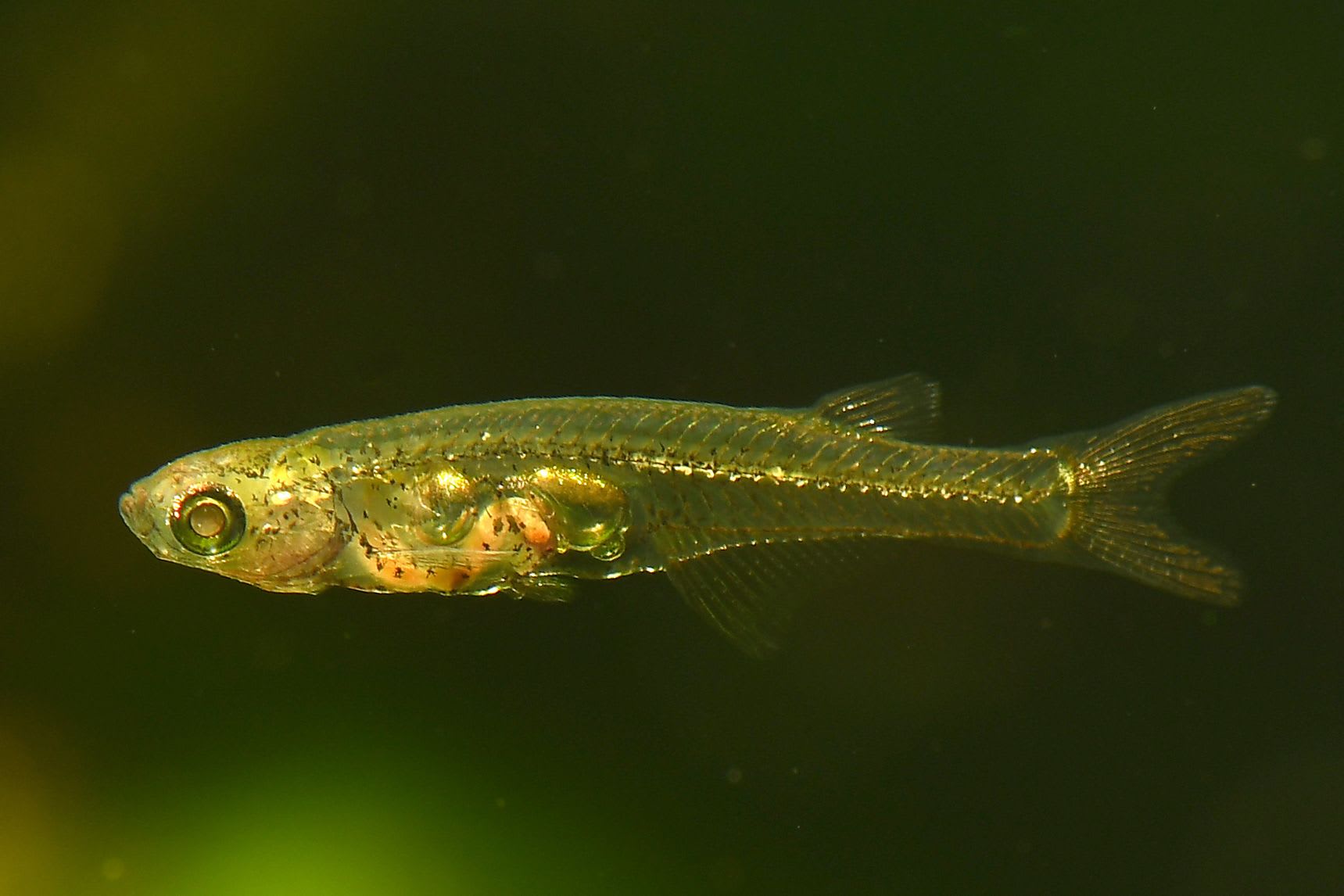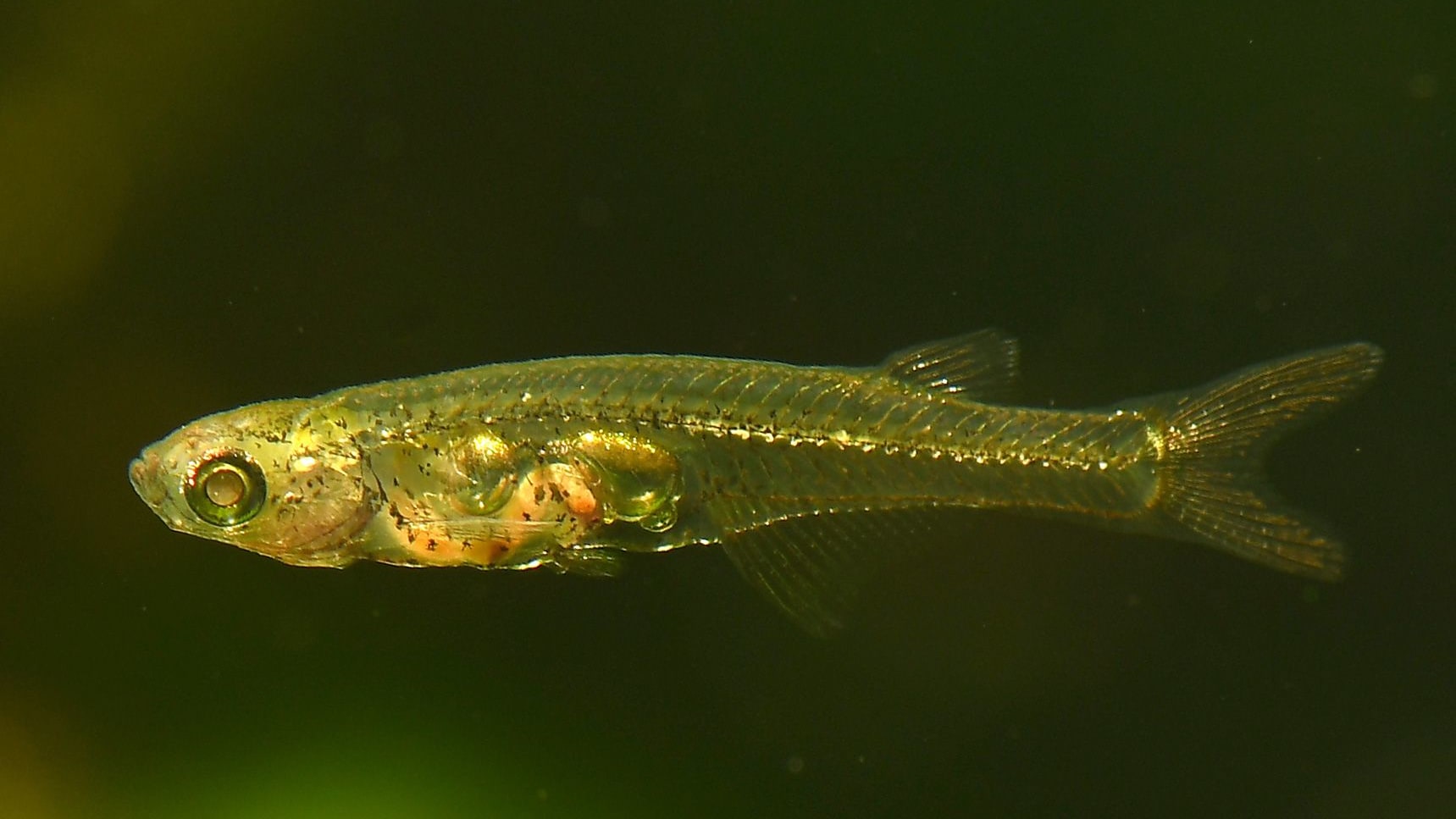دبي، الإمارات العربية المتحدة (CNN)-- كشفت دراسة جديدة أنّ نوعًا صغيرًا من الأسماك، لا يزيد طوله عن نصف بوصة (1.3 سنتيمتر تقريبًا)، قادرة على إصدار أصوات تفوق تلك الناتجة عن الفِيَلة.
ويمكن لسمكة Danionella cerebrum الصغيرة والشفافة، التي تعيش في المياه الضحلة قُبالة ميانمار، إصدار أصوات تزيد عن 140 ديسيبلًا، بحسب ما أفاد فريق دولي من العلماء، في بيانٍ صحفي نُشر الثلاثاء.

وأفاد رالف بريتز، مؤلف الدراسة، وعالِم الأسماك في متحف "سينكينبرغ" للتاريخ الطبيعي بألمانيا: "صوتها مشابه للضوضاء التي يشعر بها الإنسان أثناء إقلاع طائرة من مسافة مئة متر، وهو أمر غير معتاد بالنسبة لحيوان بهذا الحجم الضئيل".
وتميل الحيوانات الكبيرة إلى إصدار أصوات أعلى من تلك الأصغر حجمًا، فتستطيع الأفيال مثلاً إصدار أصوات تصل إلى 125 ديسيبلًا، باستخدام خرطومها.
ومع ذلك، يمكن لبعض الحيوانات الصغيرة إصدار أصوات عالية بشكلٍ لا يمكن تصديقه نظرًا لحجمها، وبينها ذلك الروبيان الذي يستخدم مخالبه لإصدار أصوات فرقعة تصل إلى 250 ديسيبلًا، وفق ما ورد في البيان.
وهناك أيضًا بعض أنواع الأسماك التي تصدر أصواتًا عالية بشكلٍ غير عادي، مثل ذكر سمكة plainfin midshipman، الذي يستطيع إصدار نداء تزاوج يصل حد 130 ديسيبلًا.
لكن يبدو أنّ سمكة Danionella cerebrum فريدة مقارنةً بالأسماك الأخرى.
واستخدم الباحثون تسجيلات فيديو عالية السرعة، والأشعة المقطعية الدقيقة، وقاموا بتحليل المعلومات الجينية ليتبيّنوا أنّ ذكور هذا النوع "يمتلكون نظامًا فريدًا لتوليد الصوت يتضمن غضروفًا طبليًا، وضلعًا متخصصًا، وعضلات مقاوِمة للتعب"، بحسب البيان.
وتُصدر هذه الأسماك ضجيجًا من طريق ضرب الغضروف بمثانة العوم، وهي عضو مملوء بالغاز يسمح لها بالتعمّق في المياه، وينجم عن ذلك نبض سريع.
وأنتجت الأسماك نبضات ذات تردد أعلى عبر ضغط مثانة العوم من الجانبين الأيسر والأيمن بنمطٍ متناوب، وأصدرت نبضات ذات تردد منخفض باستخدام ضغطات متكررة أحادية الجانب على الجانب نفسه من الجسم.
وأكّدت الدراسة: "لم يتم الإبلاغ عن أي سمكة أخرى تستخدم تقلّصات العضلات المتكررة أحادية الجانب لإنتاج الأصوات".
ويعني استخدام الانقباضات الثنائية والأحادية، إمكانية إنتاج مجموعة أكبر من الأصوات، بحسب الدراسة. وذكر الباحثون أنّ الأسماك تستخدم النبضات للتواصل مع بعضها البعض في المياه العكرة.
وأوضح بريتز: "نفترض أنّ المنافسة بين الذكور في هذه البيئة المقيِّدة بصريًا ساهمت بتطوير آلية خاصة للتواصل الصوتي".
ونُشِرت الدراسة في مجلة Proceedings of the National Academy of Sciences، الإثنين.







